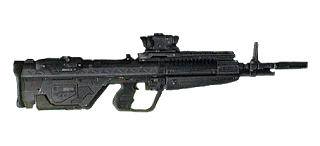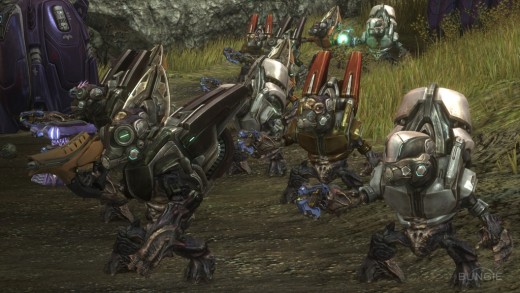Gaming Stories: Halo: Reach – Firefight
 |
| The face of easy credits. |
I haven’t played Halo 4 yet. I’ll probably get to it at some point; “the Taking of Scarabs 1, 2, Boom” is one of my favorite gaming memories, and I would rank Halo 3: ODST as one of the best games I’ve ever played. I have faith that 343 Industries will have done an acceptable job of creating a good Halo game. For me, Halo 4 would have to compare against the most recent Halo game I’ve played, Halo: Reach.
Bungie implemented a level progression system in Halo: Reach tied to credits that players could earn in the campaign, in multiplayer games, and in Firefight, which could be played with others or solo. To incentivize the player to buy into this progression system, Bungie tied avatar customization options, such as helmets and armor, and a number of achievements to the credits and the progression system.
As always, where there is a system, there will be ways to exploit it. I remember when someone on Xbox360Achievement.org’s Halo: Reach message board pointed to a strategy in the Gruntpocalypse game type in Halo: Reach‘s Firefight mode that players could use to make credit farming in Halo: Reach a breeze. That turned out to be an understatement. At my peak, I could farm 10,000 credits in about 10 minutes of play, which reduced Halo: Reach into a daily yet very disposable experience for me.
 |
| Hooray credits! |
While the strategy was relatively simple, it took skill to execute. The key was to kill the Grunts as quickly as possibly with headshots using the DMR battle rifle. The credits rolled in as long as I could maintain the streak of headshots; inevitably, a Grunt would tag me with a plasma grenade, which would end the streak and the possibility that I could continue to earn credits at a rapid pace. By that point, it was time to move on and count my haul for the day.
 |
| The tools of the professional. |
As always, people may decry that credit farming strategies demean a game. I contend that implementing these strategies requires a deep understanding of how the game works. To farm for credits in Gruntpocalypse effectively, I had to know the preferred Firefight map, Corvette, intimately. I knew the Grunts’ spawn points, and I knew how long it would be between each Grunt’s spawn. I knew the angles from each spot on the raised platforms. I knew the timing to run back to my spawn point to reload my DMR. I knew how much splash damage I could expect if a Grunt launched a rocket from his Fuel Rod Cannon or threw a plasma grenade at me. I knew the map well enough that I could play when I was tired from a long day of work and life or when I was still sleepy because I had just woken up. I was in that stage for at least 10 minutes a day every day for more than a month. There may have been times where I knew that map better than I knew how my apartment was laid out.
Strangely enough, it never occurred to my friends or me to actually play regular, actual Firefight in Halo: Reach even though we were obsessed with the Firefight mode in Halo 3: ODST. By allowing players to customize their Firefight experiences in Halo: Reach, I think it took away from the common stories that Halo 3: ODST‘s Firefight maps would help create. My friends and I could compare notes about how we handled the snipers that would spawn in the map “Crater” or how we would roll together in a Warthog to take down the Wraith tanks on the map “Lost Platoon” in Halo 3: ODST‘s Firefight maps. It’s possible that Bungie opened too much of the experience to the player’s control; with the ability to customize, our common points of reference for our Firefight stories were gone.
I suppose that I’ll always have my credits from Halo: Reach‘s Gruntpocalypse mode and the wonderful cyborg arm it bought my avatar.

